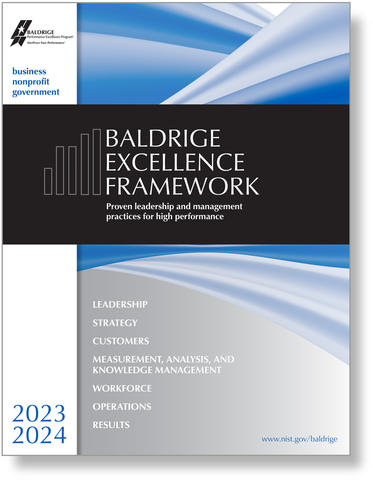Blogrige
The Official Baldrige Blog

Let me introduce the five "Al" siblings: informational, aspirational, foundational, directional, and decisional. Also, meet their young cousin, survival.
In my years of learning about organizations and teaching graduate students about strategy and organizational analysis, I have seen several key concepts that are extremely important and also hard to visualize or implement in a meaningful way. So, I have associated each of them with an al sibling and, more recently, added their cousin, another al.
The concepts (in the order of the al's above) are mission, vision, values, goals, and outcomes. And the added concept is resilience.
I will discuss each concept and its al name below, using definitions from the Glossary of Key Terms in the 2023-2024 Baldrige Excellence Framework®.
Mission
The Glossary of Key Terms defines mission as your organization's overall function. It answers the question, "What is your organization trying to accomplish?"
Your mission is informational for your employees, customers, and other stakeholders. It ensures that everyone understands what you are about and that your employees are all on the same page when it comes to defining what is important.
Vision
Your vision is your organization's desired future state. It describes where your organization is headed, what it intends to be, or how it wishes to be perceived in the future.
Your vision should be aspirational (and also inspirational). I like to think of vision, whether personal or organizational, as what you want to be "when you grow up." It sets a tone for the future and should excite employees and other stakeholders to want to join you on the journey to that future.
Values
Your values are the guiding principles and behaviors that embody how your organization and its people are expected to operate. Values influence and reinforce your organization's desired culture. They support and guide the decisions made by every workforce member, helping your organization accomplish its mission and attain its vision appropriately.
Your values are foundational. They guide every action and decision your organization and its leaders make. Your senior leaders should be role models for acting in alignment with your values. While mission and vision may change over time, values are enduring and should be updated with careful consideration.
I like to think of values as both boundary conditions and empowerment conditions. No decision or action should violate the organization's values. They are the boundaries of behavior. And any member of the organization should feel empowered to make decisions that live up to the organization's values.
Goals
Goals are future conditions or performance levels that your organization intends or desires to attain.
Goals are directional. They may be both short- and longer-term. By setting a clear direction for the organization's efforts, they are ends that guide actions. These goals may be set to meet or exceed a competitor's performance, to achieve a strategic objective, or in the case of "stretch goals" to encourage out-of-the-box thinking and to innovate for breakthrough achievement.
Goals may be quantitative or qualitative, such as achieving a new product launch by a certain date. Goals are unifying pointing all of the workforce in a common direction.
Outcomes
Outcomes are the end results of your organization's efforts. Outcomes measure the impact of your work on key stakeholders.
Outcomes are decisional. Outcomes are the measures of goal achievement or non-achievement. Based on those outcomes, decisions should be made about next steps and future goals. If stated goals have been achieved, they might have impacted some stakeholders in unexpected ways (both positive and negative). Decisions need to be made to correct unintended consequences or to capitalize on unexpected opportunities.
Resilience
Resilience is an organization's ability to anticipate, prepare for, and recover from disasters, emergencies, and other disruptions. When disruptions occur, resilient organizations protect and enhance workforce and customer engagement, supply-network and financial performance, organizational productivity, and community well-being.
Resilience is about survival. In the uncertain, and sometimes chaotic, environment of recent years and likely in the future, as well, an organization's ability not only to "bounce back" but also to continue operating through a disruption will be a condition of survival.
Forefront organizations will capitalize on disruptions not only to survive but also to thrive and "bounce forward" into leadership positions. Innovators will not only bounce forward, but also be the cause of positive disruptions in their marketplace.
The Family
The family of "Al" siblings and their newer cousin cannot be a dysfunctional family. Instead, an integration of mission, vision, values, goals, outcomes, and resilience is needed. This requires a trusting culture, a solid governance infrastructure, and agility as performance system (organizational family) characteristics.
How healthy is your organizational family?

Baldrige Excellence Framework®
The Baldrige Excellence Framework® has empowered organizations to accomplish their missions, improve results, and become more competitive. It includes the Criteria for Performance Excellence®, core values and concepts, and guidelines for evaluating your processes and results.
Purchase your copy today!
Available versions: Business/Nonprofit, Education, and Health Care





